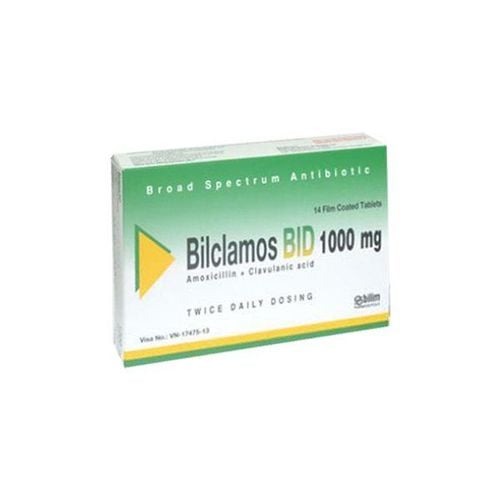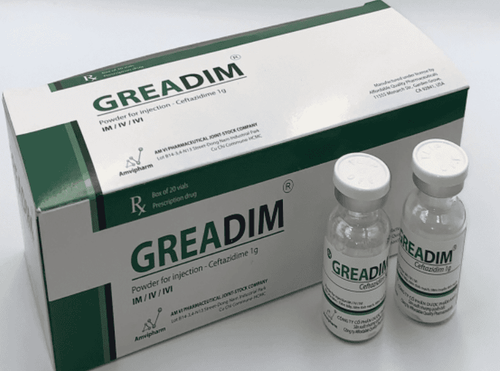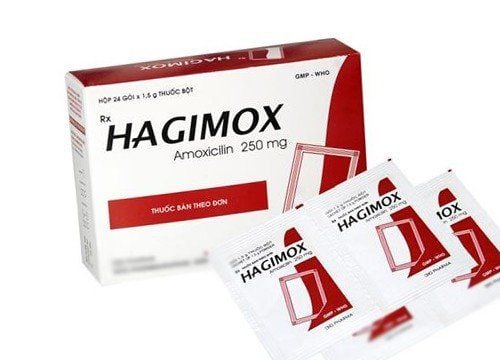This is an automatically translated article.
Article by pharmacist Nguyen Thi Thanh Hoa, Faculty of Pharmacy, Vinmec Times City International General Hospital
Klamentin 250/31.25 and 500/62.5 are oral antibiotics with the active ingredient being a combination of amoxicillin/clavunic acid. The drug is prepared in the form of granules for oral suspension, with the content of amoxicillin trihydrate/potassium clavulanate respectively 250mg/31.25mg and 500mg/62.5mg.
1. Uses of Klamentin 250/31.25 and 500/62.5
Klamentin 250/31.25 and 500/62.5 are prepared in the form of granules mixed with oral suspension, suitable for children from 3 months of age and older.
The drug has an antibacterial effect thanks to its ability to inhibit the biosynthesis of the bacterial cell wall, so that the bacteria do not have a protective cell wall and are destroyed. It is indicated in monotherapy and in combination regimens for the treatment of upper and lower respiratory tract infections, urinary tract infections, skin and soft tissue infections, bones and joints. Klamentin is bactericidal against many types of bacteria, including beta-lactamase-producing strains resistant to ampicillin and amoxicillin.
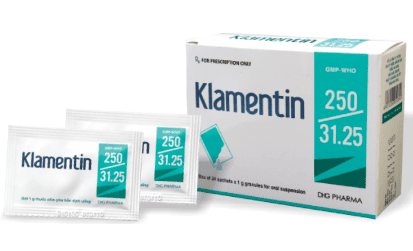
2. Dosage of Klamentin 250/31.25 and 500/62.5
Depending on the indications and users, Klamentin with the concentration of 250mg/31.25mg and 500mg/62.5mg provides solutions for many different patient groups. Klamentin should be taken immediately before meals to minimize drug intolerance in the gastrointestinal tract to increase the therapeutic effect of the drug.
Suggested dosing level: Dosage is calculated according to the dose of amoxicillin
2.1. Children from 3 months old: - otitis media, sinusitis, respiratory infections, severe infections: 45 mg/kg body weight/day, divided into 2 times.
- Mild infections: 25 mg/kg body weight/day, divided into 2 times.
2.2. Children ≥ 40kg: calculate dose as adult dose 2.3. Adults: - Mild to moderate infections: 1000/125 mg (2 packs of Klamentin 500mg/62.5mg)/time x 2 times/day.
- Severe infections (including recurrent and chronic urinary tract infections, lower respiratory tract infections): 1000/125 mg (2 packs of Klamentin 500mg/62.5mg)/time x 3 times/day.
3. How to take Klamentin 250/31.25 and 500/62.5
The usual pulling treatment time is from 5 - 10 days.
Mix the medicine with a sufficient amount of water (about 5 - 10 ml of water for 1 pack), stir well and take the medicine right before meals.
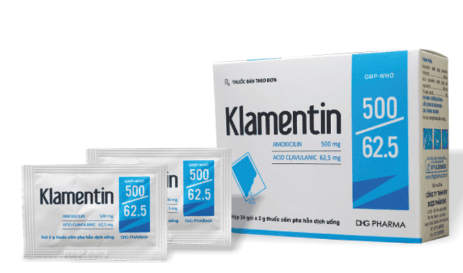
4. Undesirable effects when using Klamentin 250/31.25 and 500/62.5
When using Klamentin, you may experience side effects of the drug such as diarrhea, vomiting, nausea, abdominal pain, digestive disorders... Some rare but serious side effects of the drug such as reactions anaphylaxis, Quincke's edema, interstitial nephritis... However, not all patients experience undesirable effects of the drug and not everyone experiences all side effects. If you feel that the side effects are bothersome or severe, or prolonged, you need to talk to your healthcare provider for advice and timely support.
5. Precautions when using Klamentin 250/31.25 and 500/62.5
Drugs can interact with concomitant medications, so you will need to be evaluated and consulted by your doctor, pharmacist before using the drug. Patients should discuss their medical history, allergy history, and chronic medications with their doctor before taking the drug. Avoid use if you have a history of severe allergy to amoxicillin or other penicillin antibiotics and cephalosporins.
Use in pregnancy and lactation:
The drug crosses the placenta and may be associated with an increased risk of necrotizing enterocolitis or gastrointestinal disorders in the neonate especially when used in close proximity. Therefore, during pregnancy, the drug should be used only when absolutely necessary.
Amoxicillin is excreted in human milk (the effect of clavulanic acid on the nursing infant is unknown). In breastfed infants taking amoxicillin, diarrhea and fungal infections may occur. Therefore, use the drug only when absolutely necessary. Breastfeeding mothers need to talk to their healthcare provider for advice on measures to minimize adverse effects for the baby.
Medicines and chemicals at Vinmec Health System Hospitals are stored in linen warehouses in the most optimal conditions. The pharmacy system of Vinmec International General Hospital ensures to serve the needs of customers 24/7, with in-depth consulting services. The pharmacy pharmacists always provide full instructions on how to use the medicine, answer questions so that you understand how to use it and the notes during the treatment process, in order to achieve effectiveness, safety and reasonableness. when using drugs.
Please dial HOTLINE for more information or register for an appointment HERE. Download MyVinmec app to make appointments faster and to manage your bookings easily.






